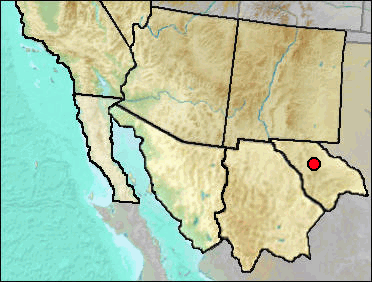Class Mammalia
Order Rodentia
Family Cricetidae
Subfamily Neotominae
Genus Peromyscus

Synonyms. Peromyscus pectoralis. Bradley et al. (2015) elevated P. pectoralis laceianus to specific status on the basis of both genetic and morphological data.
The modern distribution of the Northern White-ankled Mouse is from north of the Rio Grande in the Big Bend to the Carlsbad, New Mexico, area and eastward through central Texas to the Oklahoma border. They generally occur in rocky, low-lying habitats. They are the common Peromyscus currently around Dry Cave, an area more or less ecotonal between Lower and Upper Sonoran life zones.
The lower jaws of P. boylii and P. laceianus are similar and overlap to a degree in discriminant analyses.
No UTEP specimens from the Pleistocene are unequivocally identified as P. laceianus. Fowlkes Cave seems to have solidly identified P. laceianus, but may be a mixed Holocene/Pleistocene site (discussed in the Fowlkes Cave account). Big Manhole Cave, a few miles from Dry Cave and at about the same elevation produced a Holocene fauna (Lear and Harris 2007) with Peromyscus represented almost exclusively by P. laceianus—it appears that P. laceianus invaded southeastern New Mexico some time between about 11 and 4 kya.
Sites.
Late Wisconsin/Holocene: Fowlkes Cave (Dalquest and Stangl 1984b).
Rejected. Late Wisconsin/Holocene: Beyond Bison Chamber (Harris 1970a: ?).
Literature. Bradley et al. 2015; Dalquest and Stangl 1984b; Harris 1970a.
Last Update: 27 Jun 2015